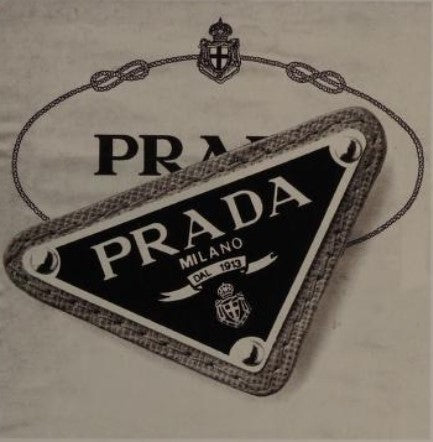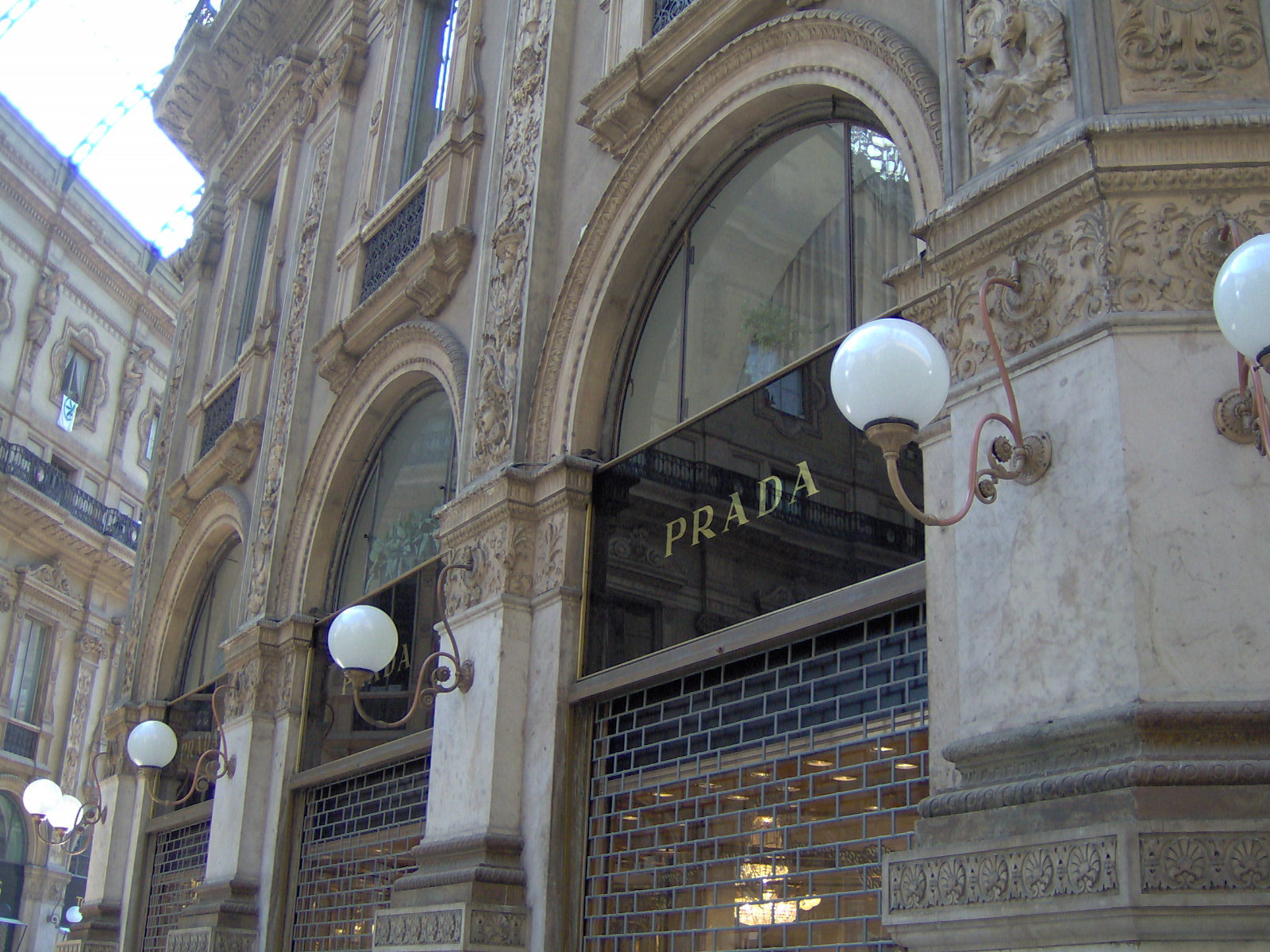
Mario Prada: The Visionary Behind a Luxury Legacy
The story of Mario Prada and the iconic fashion house he founded offers a compelling journey from a small leather goods store in Milan to a global luxury brand.
This article explores the story of Mario Prada, the visionary Italian designer who laid the groundwork for one of the world's most prestigious luxury brands.
Mario's entrepreneurial spirit and commitment to quality laid the foundation for a business that would transcend his own expectations. His unwavering dedication to fine materials and precise craftsmanship turned his products into objects of desire, catering to the elite of Milan and beyond.
Born in Milan in the late 19th century, Mario's journey began with a small leather goods store that would evolve into a global symbol of elegance, innovation, and craftsmanship.
The Founding of Prada
In 1913, Mario Prada, alongside his brother Martino, opened a boutique in the prestigious Galleria Vittorio Emanuele II in Milan. Operating under the name Fratelli Prada (Prada Brothers), the shop specialized in high-quality leather goods, including:
- Handbags
- Bags
- Trunks
- Travel accessories
The boutique was unlike any other at the time, blending cutting-edge design with Italian tradition. Each item was handmade, a testament to Mario Prada's insistence on quality above all else.
The brothers also imported luxurious English steamer trunks and suitcases, highly coveted by Italy's elite and globetrotting aristocrats.
Mario Prada's emphasis on precision and artistry quickly set his work apart. He personally oversaw every detail of the production process, ensuring that each item reflected his uncompromising standards of quality. This meticulous attention to detail earned the brand a loyal following among Milan’s high society, solidifying its reputation early on.
"Quality remains long after the price is forgotten." - This philosophy of Mario Prada has guided the brand since its inception.

The store's location in Milan's renowned shopping arcade was strategic. The Galleria Vittorio Emanuele II symbolized elegance and exclusivity, providing the perfect backdrop for Prada's luxury offerings. Its neoclassical architecture and opulent interior aligned perfectly with Prada’s image as a purveyor of timeless sophistication.
The choice of the Galleria as Prada’s first location also highlighted Mario Prada's keen sense of marketing, leveraging Milan's reputation as Italy’s fashion capital to attract the attention of the country’s aristocracy and visiting dignitaries. This decision showcased Mario's business acumen, as he understood the importance of visibility in a competitive market.
The meticulous craftsmanship and timeless designs of Prada's products quickly set the brand apart, earning it a reputation as a leader in leather goods.
Royal Recognition and Early Success
In 1919, just six years after the store's opening, Prada achieved a significant milestone:
- Appointed as the Official Supplier to the Italian Royal House
- Allowed to incorporate the House of Savoy's coat of arms into its logo
- Added a knotted rope design to its branding
This prestigious title elevated Prada's status, cementing its place as a symbol of refinement and luxury in the fashion world. The royal endorsement also marked a turning point in Prada's history, enabling the brand to establish relationships with foreign diplomats, aristocrats, and luxury travelers, thereby expanding its reputation beyond Italy.
These connections laid the groundwork for Prada’s eventual international success, as the brand's exclusivity attracted discerning customers worldwide.
Mario Prada's Vision and Conservative Views
While Mario Prada excelled in crafting a brand that resonated with aristocracy and dignitaries, his personal beliefs about business and family roles were deeply rooted in traditional values.
He believed women should not work outside the home and excluded female family members from involvement in the company. This belief was reflective of the conservative attitudes prevalent in early 20th-century Italy, where patriarchal traditions often dominated family-owned businesses.
Ironically, after Mario's death in 1958, the company's leadership passed to his daughter Luisa Prada, challenging his original intentions. Her appointment marked a pivotal shift, as Luisa not only upheld her father's vision of excellence but also navigated the challenges of post-war Italy’s evolving economy.
Despite this contradiction, Mario's founding principles of exceptional quality and timeless design remained central to the company's identity.
The Transitional Era: Luisa Prada's Leadership
Luisa Prada managed the family business for nearly two decades following her father's death. During her tenure:
- Prada maintained its commitment to craftsmanship and luxury
- The brand operated as a respected but traditional leather goods retailer
- The company survived post-war economic shifts and changing market demands
Luisa Prada's leadership preserved the brand's heritage during a time of great transformation in Italy, as the country moved from post-war recovery to becoming a center of modern design. Her resilience ensured that Prada remained relevant during this turbulent period, paving the way for its eventual resurgence.
Luisa's steady management preserved the company's reputation, setting the stage for the radical transformation that would occur in the late 20th century.
The Revolutionary Vision of Miuccia Prada
The true renaissance of Prada began in 1970 when Miuccia Prada, Luisa's daughter and Mario's granddaughter, joined the family business. With a doctorate in political science and a background in mime, Miuccia brought a unique blend of intellect, creativity, and innovation to the company.
Miuccia’s unconventional background allowed her to challenge the norms of the luxury industry, introducing elements of avant-garde design and practicality that resonated with a younger, global audience. Her ability to reinterpret luxury for modern sensibilities made her a trailblazer, attracting a new generation of fashion-conscious consumers.
Key Innovations under Miuccia's Leadership:
- Introduction of Pocono nylon handbags in the 1980s
- Launch of the first ready-to-wear collection in 1988
- Expansion into footwear, eyewear, and fragrances
Miuccia's leadership marked a turning point that would redefine the brand's identity. Her first major breakthrough came with the nylon handbags, which defied conventional ideas of luxury. Initially met with skepticism, these durable, water-resistant bags quickly became a symbol of modern elegance. This reinvention of materials was a bold move that cemented Prada’s reputation as an innovator.
Miuccia also collaborated with artists and architects, bringing a multidimensional approach to Prada’s marketing campaigns and store designs, which became celebrated as much for their aesthetic as for their functionality.
The Prada Aesthetic: Tradition Meets Innovation
Under Miuccia's guidance, Prada retained its commitment to traditional craftsmanship while embracing bold experimentation. The brand's aesthetic evolved to include a unique combination of functionality and artistry, often challenging conventional notions of beauty.
This daring approach allowed Prada to carve out a distinct identity, standing apart from other luxury brands that often relied on traditional formulas.
Miuccia’s leadership also extended to sustainability, with the brand initiating programs to reduce waste and explore eco-friendly materials. These efforts reflect a forward-thinking approach that aligns Prada’s legacy with contemporary values.
In 2019, Prada became the first luxury group to sign a sustainability-linked loan, tying financial incentives to its environmental targets—a move that set a benchmark in the fashion industry.
The brand also introduced the Re-Nylon initiative, replacing virgin nylon with recycled materials in its iconic designs, showcasing Prada’s ability to adapt to modern environmental concerns while maintaining its signature style.
Iconic Prada Products:
- Saffiano Leather: Patented by Mario Prada, still widely used - 1913
- Nylon Backpack: Redefined luxury materials - 1980s
- Galleria Handbag: Named after the first Prada store location - 2007
These products exemplify Prada's balance of timeless design with modern innovation, remaining staples in the fashion world celebrated for their practicality and sophistication. Each of these items embodies the philosophy Mario Prada envisioned—functional elegance crafted with meticulous attention to detail.
A Legacy of Global Influence
While Mario Prada laid the groundwork for a company rooted in Italian craftsmanship, it was his granddaughter who transformed Prada into a global powerhouse. Today, the brand:
- Operates over 600 stores worldwide
- Generates annual revenues exceeding $4 billion
- Collaborates with artists, architects, and filmmakers
- Shapes cultural conversations about luxury, design, and sustainability
Through collaborations with renowned architects like Rem Koolhaas for store designs and partnerships with artists for limited-edition collections, Prada has consistently blurred the lines between fashion, art, and architecture.

Mario Prada's original vision of quality and exclusivity continues to inspire every aspect of the brand. From its early beginnings in Milan to its current status as a global cultural icon, Prada remains a testament to the enduring power of innovation and craftsmanship.

The Future of Prada
As Prada continues to evolve, it faces new challenges and opportunities:
- Embracing digital transformation and e-commerce
- Addressing sustainability concerns in the fashion industry
- Appealing to younger generations of luxury consumers

Industry experts predict that Prada's commitment to innovation and quality will keep it at the forefront of luxury fashion for years to come. With the leadership of Miuccia Prada and Patrizio Bertelli, and the involvement of a new generation through Lorenzo Bertelli, the brand is poised to further its influence in both the fashion and cultural spheres.
The Enduring Impact of Mario Prada's Vision
Mario Prada's journey from a modest leather goods entrepreneur to the founder of a global luxury brand is a testament to the power of vision and perseverance. His story reflects the quintessential spirit of Italian craftsmanship, blending tradition with innovation in a way that resonates across generations.
His dedication to craftsmanship and quality laid the foundation for Prada's enduring success, while the innovative leadership of his descendants ensured its evolution into a cultural icon. Prada’s ability to adapt without losing its core identity has made it not only a luxury brand but also a symbol of resilience and reinvention.
Prada's legacy is not just one of luxury, but of transformation—a brand that redefined what it means to be fashionable while staying true to its roots. It is this duality—honoring its heritage while embracing the future—that ensures Prada’s place as a leader in the world of fashion.
From the Galleria Vittorio Emanuele II in Milan to flagship stores around the world, the story of Prada continues to inspire, proving that timeless elegance and bold innovation can indeed go hand in hand. In every design, there is a reflection of Mario Prada's original vision—a legacy that remains as relevant today as it was over a century ago.
Cover photo credit: "Prada" - Progetto Prada Arte


















